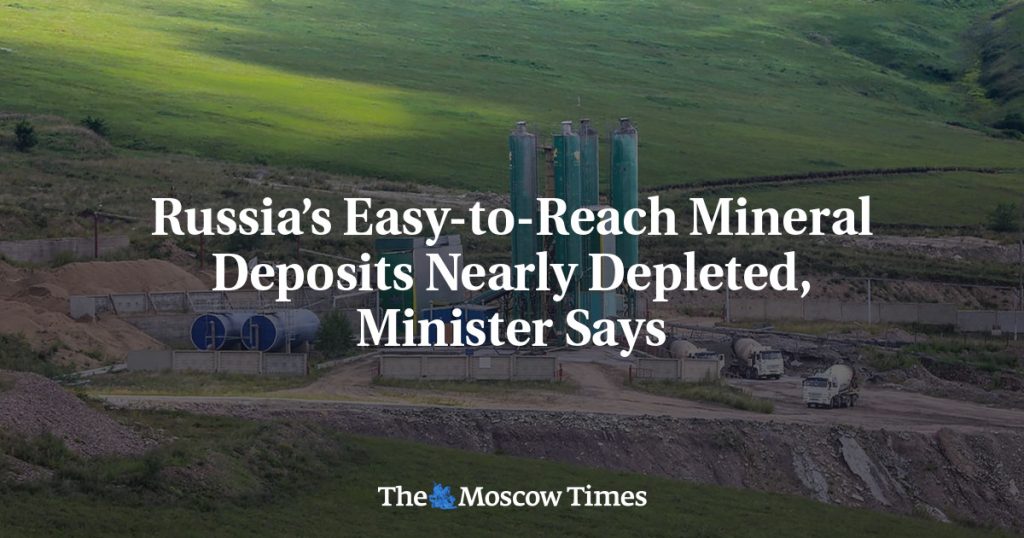The head of Russia’s Natural Resources Ministry, Alexander Kozlov, announced that the country’s large and easily accessible mineral deposits are nearly depleted. Geologists have been forced to explore more remote and difficult-to-reach regions in the Arctic, Far East, and Siberia due to this depletion. Only a small percentage of these territories have been explored by geologists, leaving vast potential for future mining exploration. Critical minerals like uranium, chromium, manganese, titanium, fluorspar, tungsten, and aluminum are projected to last only five to 15 years at current mining sites, most of which were developed during the Soviet era.
Kozlov also expressed concerns about the low levels of mineral exploration in Russia, warning that this could lead to a significant production decline in the industry. He noted that nearly all profitable reserves in Russia are already under license, emphasizing the need for increased exploration to sustain the industry. Environmental experts have raised concerns about future mineral exploration in fragile regions like the Arctic, suggesting that inadequate environmental safeguards could lead to serious ecological damage. This highlights the importance of balancing mineral resource extraction with environmental protection in these sensitive areas.
President Vladimir Putin emphasized the potential for mining exploration in the Far East and Siberia during a meeting with Kozlov. Only a small percentage of these territories have been explored by geologists, leaving vast untapped resources that could play a crucial role in sustaining the mining industry in Russia. Putin’s comments echo Kozlov’s warnings about the depletion of critical minerals at current mining sites and the need for future exploration to ensure a stable supply of resources. This calls for strategic planning and investment in mineral exploration to secure Russia’s position as a leading producer of minerals on the global stage.
The reliance on outdated mining sites developed during the Soviet era has contributed to the depletion of mineral resources in Russia. Many of these sites are approaching the end of their projected lifespan, leading to concerns about the sustainability of the mining industry. Kozlov’s warning about the limited lifespan of critical minerals at these sites underscores the urgent need to diversify exploration efforts and identify new sources of resources. This will require a coordinated approach involving government agencies, mining companies, and environmental experts to ensure responsible and sustainable mineral extraction practices.
The potential for future mineral exploration in Russia’s Arctic, Far East, and Siberian regions presents both opportunities and challenges for the mining industry. While these areas hold vast untapped resources that could drive economic growth, there are also concerns about the environmental impact of expanding mining activities in these fragile ecosystems. Balancing the need for resource extraction with environmental protection will be essential to avoid irreversible damage to these regions. This calls for transparent and accountable decision-making processes that prioritize sustainable development and ecosystem conservation in line with global environmental standards.
In conclusion, the depletion of large and easily accessible mineral deposits in Russia underscores the need for strategic planning and investment in mineral exploration. The limited lifespan of critical minerals at current mining sites highlights the urgency of diversifying exploration efforts and identifying new sources of resources. Future mineral exploration in remote regions like the Arctic, Far East, and Siberia presents opportunities for economic growth but also challenges related to environmental protection. Sustaining the mining industry in Russia will require a comprehensive approach that balances resource extraction with environmental conservation to ensure long-term viability and responsible stewardship of the country’s mineral resources.


